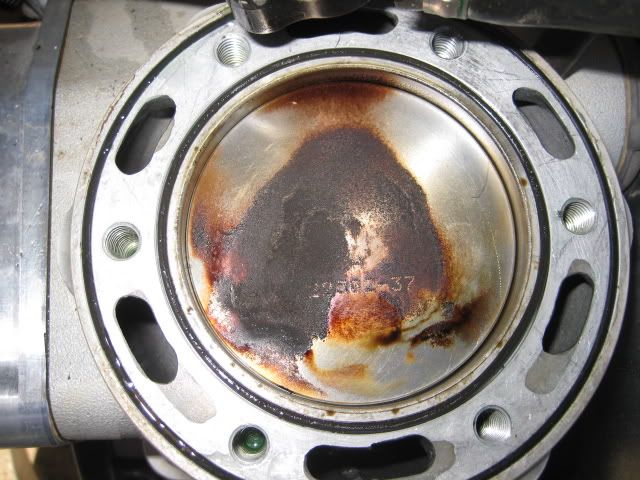I've been kind of following this, and a last piece of information has me puzzled.
it will sit there and idle perfectly forever if you don't touch it. after riding it for a second it will idle higher or lower.
However, this seems to contradict this statement (I mean no disrespect, just trying to understand):
The idle varies quite a bit from minute to minute. It does it at any temperature or altitude, on flat ground, pointed uphill or downhill. I borrowed another 07 300 and swapped the carb, reed valves, CDI and ignition. The bike will not idle consistently. I checked the compression on the other 300 this morning and it was 165 cold with a squirt of oil versus my 140.
Given my confusion, I'll assume that if the carb isn't touched, it idles fine.
The dynamic of moving the slide changes things.
1. Slide possibly hanging up? When you changed carbs, did you change slides, too? Or did you take one slide from another?
2. Could the slide / idle speed screw have some sort of "deformity" (for lack of a better word) so when the slide is raised and then lowered, it doesn't lower to the same spot? it doesn't take much change in slide elevation to change the idle speed. (My old BMW had worn the idle speed adjuster flat from 100,000,000 impacts such that you could not adjust the idle with the adjuster as the "slope" was impacted by the wear by the slide. I had to buy new idle adjusters in order to properly adjust the idle.)
3. Could the throttle mechanism (Domino) have an issue? Frayed cable, weak return spring, boogir on the throttle tube, etc., which would keep the slide from consistently returning all the way to the bottom? How much free play on the throttle?
4. Is there any way that the needle is NOT fully captured by the plastic retainer? If the needle can move up and down just a bit, it will affect the mixture.
My guess is that it is something mechanical not allowing the slide to come to a rest in precisely the same spot everytime the throttle is moved. if it idles well w/o touching the throttle, and you move the throttle, and it doesn't return, it might be something to do with the throttle/slide/needle/spring.
5. OH, one more thought, although this you would hear, so it is a long shot. Is the powervalve operating correctly? Can it bind up? If you blip the throttle (enough), you might open the valve. if it doesn't close consistently, you do change (theoretically) the compression ratio, which would affect the bike's ability to idle consistently ('cause they run open loop). higher compression, more torque, higher throttle speed, and
vice versa
anyway, those are questions.
good luck.
blitz

